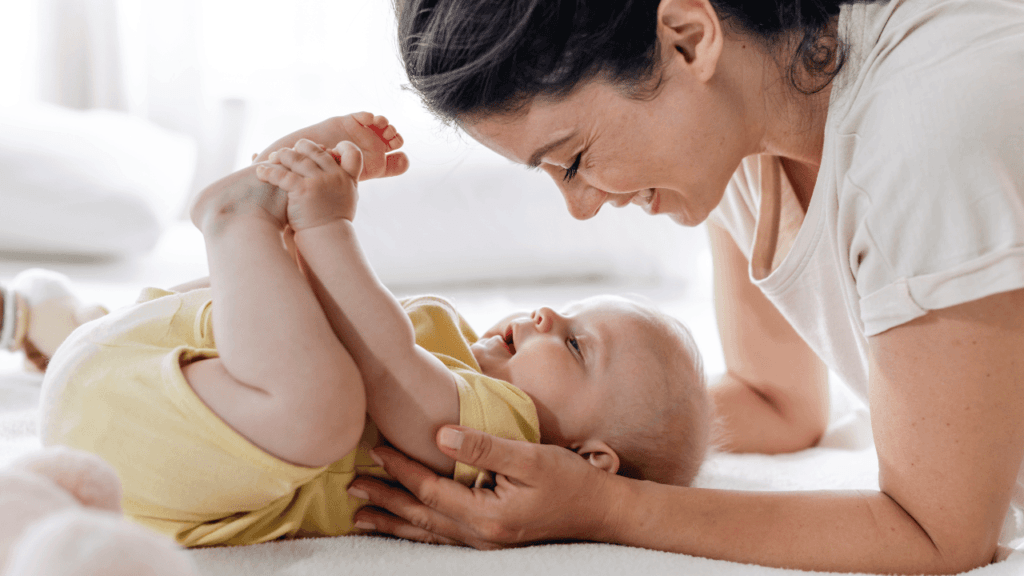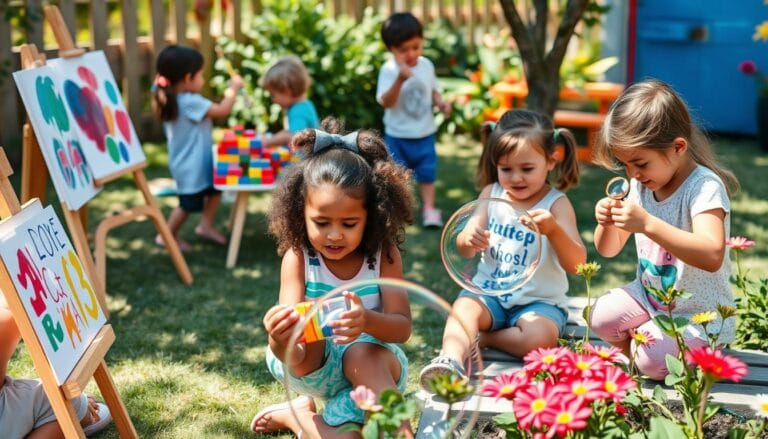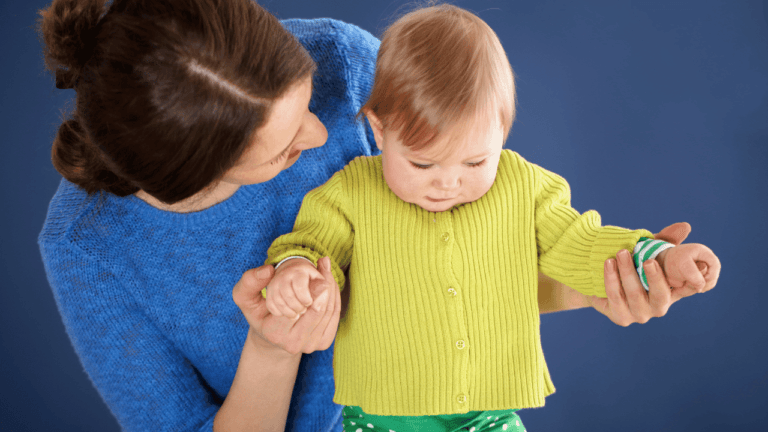
Milestones in the First Month Baby’s Early Development
Milestones in the First Month of a baby’s life, there are several important milestones in their development. Every baby develops at their own pace, but most babies achieve certain milestones by the end of their first month. It is crucial to track these milestones as they provide important markers of a baby’s growth and development.
Key Takeaways
- Milestones in the first month are important markers of a baby’s growth and development.
- Every baby develops at their own pace, but there are certain milestones most babies achieve by the end of their first month.
- Tracking these milestones allows parents to monitor their baby’s progress and achievements.
- The first month is filled with physical, cognitive, social, emotional, and communication milestones.
- Discuss any concerns about your baby’s development with your healthcare provider.
Physical Milestones
By the end of their first month, most babies achieve several physical milestones. These milestones are crucial indicators of a baby’s growth and development. Let’s take a closer look at some of the key physical milestones reached during the first month:
Arm Movements and Hand Coordination
During the first month, babies may make jerky, quivering arm movements. They also start bringing their hands near their face, exploring their hands and fingers.
Head Movements
While lying on their stomach, babies begin to move their head from side to side. This helps them strengthen their neck muscles and develop better control over their head movements.
Vision Development
A baby’s vision starts to develop during the first month. They can focus on objects located 8 to 12 inches away. They are particularly drawn to human faces, exhibiting a preference for faces over other shapes. Additionally, babies are captivated by black-and-white or high-contrast patterns.
| Physical Milestones | Description |
|---|---|
| Arm Movements and Hand Coordination | Babies make jerky, quivering arm movements and bring their hands near their face. |
| Head Movements | Babies start moving their head from side to side while lying on their stomach. |
| Vision Development | Babies can focus on objects 8 to 12 inches away. They prefer human faces and are captivated by black-and-white or high-contrast patterns. |
Cognitive and Sensory Milestones
In the first month of a baby’s life, cognitive and sensory development plays a vital role in their overall growth. During this time, babies reach important milestones that shape their abilities to recognize stimuli, engage with their surroundings, and communicate. Let’s explore some of the key cognitive and sensory milestones that typically occur within the first month.
Recognition of Sounds
By the end of their first month, babies begin to demonstrate recognition of familiar sounds, including their parents’ voices. Their auditory senses become more attuned, allowing them to differentiate between different tones and pitches. This milestone sets the foundation for language development and communication in the months to come.
Preference for Familiar Objects and People
Babies start showing a preference for familiar objects and people at a distance. They may demonstrate heightened awareness and interest in the faces of their loved ones, providing a beautiful starting point for bonding and attachment. This milestone also indicates the beginning of social cognition and the ability to distinguish familiar from unfamiliar stimuli.
Coordination of Hands and Eyes
Within their first month, babies start to use their hands and eyes in coordination, a breakthrough for their motor and sensory skills. They can track objects with their eyes, follow movement, and reach out to touch things with increasing precision. This milestone is crucial for further exploration, object manipulation, and the development of fine motor skills in the months ahead.
Babbling and Imitation
During the first month, babies may initiate their babbling journey by imitating sounds they hear around them. They may smile and make vocalizations in response to their parents’ voices, paving the way for future language development. This milestone showcases their growing ability to communicate and connect through vocalizations and joyful interactions.
Enjoyment of Interactive Play
In their first month, babies begin to display enjoyment and engagement in interactive play with others. They respond to play cues, such as tickling or peek-a-boo, and actively participate in turn-taking interactions. This milestone is a joyful indication of their growing social awareness and the desire for human connection.
To summarize, the cognitive and sensory milestones achieved in the first month of a baby’s life are awe-inspiring. From recognizing sounds and displaying preferences to coordinating hand-eye movements and engaging in interactive play, these milestones lay the groundwork for future cognitive, sensory, and social development.
| Cognitive Milestones | Sensory Milestones |
|---|---|
| Recognition of familiar sounds, including parents’ voices | Preference for familiar objects and people at a distance |
| Coordination of hands and eyes | Increased awareness of visual stimuli and tracking |
| Initiation of babbling and imitation | Heightened responsiveness to tactile sensations |
| Participation in interactive play | Enjoyment of auditory and visual stimuli |
Social and Emotional Milestones
During the first month of a baby’s life, they achieve significant social and emotional milestones. These milestones mark the beginning of their journey in understanding and expressing their emotions and interacting with the world around them.
One of the key milestones is when babies start responding to their own name. They recognize their name and turn their head towards the source of the sound, displaying their growing awareness of their own identity. This is an exciting milestone for parents and signifies the development of social recognition in babies.
Babies also begin to use their voice to express their emotions, showcasing their increasing ability to interact with their caregivers. They express joy through cooing and babbling, while displeasure is often communicated through crying. These vocal responses are an important part of their emotional development and allow them to form connections through communication.
Another milestone in the first month is babies’ ability to distinguish emotions by tone of voice. They can differentiate between different tones of voice, such as a soothing voice versus an excited voice. This skill highlights their growing sensitivity to emotional cues and their capacity to respond accordingly.
In addition, babies show an interest in mirror images. They enjoy looking at their reflection and may even smile at themselves. This fascination with their own image demonstrates their emerging sense of self-awareness and lays the foundation for further self-recognition in the future.
During this month, babies also begin to explore objects with their hands and mouth. They reach out to touch and grasp objects, discovering new textures and shapes. At times, they may struggle to reach objects that are out of their reach, showcasing their growing determination and persistence.
Lastly, babies enjoy playing peek-a-boo. This simple game brings them joy as they start to understand the concept of objects disappearing and reappearing. It also shows their developing social engagement and their appreciation for interactive play.
Overall, the social and emotional milestones achieved in the first month are essential for a baby’s development. They represent the beginning of their journey in understanding emotions, interacting with others, and forming connections with the world around them.
Communication Milestones
Babies experience significant communication milestones in their first month of life. These milestones involve vocalization, gestures, and imitation, as they begin to develop the foundations of language and interpersonal interaction. By recognizing and tracking these milestones, parents can gain insights into their baby’s cognitive and social development.
Babbling and Sound Imitation
During the first month, babies often progress from making random sounds to babbling chains of consonants. They enjoy experimenting with different vocalizations, such as “ba-ba” or “ga-ga.” This vocal play is crucial for speech development as it helps babies explore the sounds and rhythms of language.
Furthermore, babies start imitating sounds they hear, including those made by their caregivers. They may attempt to mimic simple sounds or even try to imitate words. This imitation is an essential way for babies to learn how to use their vocal cords and develop their communication skills.
Gestures and Non-Verbal Communication
Babies in their first month also begin using simple gestures as a form of non-verbal communication. They may shake their head to signify “no” or wave their hands to say goodbye. These gestures are early indications of their understanding and ability to communicate meaning without words.
Response to Verbal Requests
As babies develop in their first month, they become more responsive to simple verbal requests. For example, when their caregiver asks, “Where is your toy?” the baby may turn their head to look in the direction of the toy. This responsiveness demonstrates their growing comprehension of spoken language and their ability to follow simple instructions.
Interacting and bonding with their caregivers lay the foundation for babies’ communication skills, which will continue to develop and refine throughout their lives.
Sample table:
| Communication Milestones | Description |
|---|---|
| Babbling and Sound Imitation | Babies begin babbling and imitating sounds they hear. They experiment with different consonant sounds and may try to mimic words. |
| Gestures and Non-Verbal Communication | Babies start using simple gestures, such as shaking their head “no” or waving bye-bye, to communicate non-verbally. |
| Response to Verbal Requests | Babies become more responsive to simple verbal requests and can follow basic instructions. |
Motor Milestones
During the first month of a baby’s life, they begin to achieve significant motor milestones that mark their physical development. By the end of their first month, babies may start to demonstrate remarkable progress in their motor skills.
One of the essential motor milestones is rolling over, which involves the transition from lying on their stomach to their back, and vice versa. This development showcases their increasing strength and coordination. Although not all babies achieve this milestone within the first month, it is an exciting milestone to look out for as they continue to grow.
Another motor milestone during this phase is sitting up with assistance. While babies may not have the strength and balance to sit unsupported, they start to display improved head control and can sit up when provided with support.
Babies also begin to exhibit the ability to reach for objects with their hands. This newfound hand-eye coordination allows them to grasp and explore their surroundings, fostering their sensory and cognitive development.
Furthermore, babies may also exhibit attempts to transfer objects from one hand to the other. This milestone demonstrates the growth of their fine motor skills and their developing ability to manipulate objects.
In addition, babies may surprise their parents by supporting their whole weight on their legs when they are held upright. This signifies the strengthening of their leg muscles and prepares them for future milestones like standing and walking.
These motor milestones are not fixed deadlines, as every baby develops at their own pace. It’s important to remember that babies are unique and may reach these milestones at different times. Consulting with healthcare professionals will provide guidance and reassurance on a baby’s individual progress.
Motor Milestones at a Glance:
- Rolling over from stomach to back and vice versa
- Sitting up with assistance
- Reaching for objects with hands
- Transferring objects from one hand to the other
- Supporting whole weight on legs when held upright
Conclusion
Milestones in the First Month, The first month of a baby’s life is an incredible journey filled with numerous milestones that mark their development. From physical achievements to cognitive and social milestones, tracking these key markers is crucial for parents to monitor their baby’s growth progress. While every baby develops at their own pace, these milestones provide a helpful guide to ensure that your baby is thriving and reaching important developmental goals.
It is important for parents to take note of these milestones and maintain open communication with their healthcare provider. Regular check-ups and discussions with healthcare professionals can provide valuable insights and identify any potential concerns at an early stage. By tracking your baby’s milestones, you can ensure they are on a healthy and successful developmental journey.
Remember, every baby’s growth journey is unique and individual. Don’t compare your baby’s progress with others, as each child has their own pace and timing. Instead, focus on celebrating and supporting your baby’s achievements in their first month and beyond. Embrace this special time and enjoy witnessing your baby’s growth and development unfold in their own remarkable way.
FAQ
What are the Milestones in the First Month?
Milestones in the First Month, babies achieve significant milestones in their physical, cognitive, sensory, social, emotional, communication, and motor development.
What physical milestones do babies achieve in their first month?
By the end of their first month, babies show arm movements, head movements, improved vision, and a preference for human faces and high-contrast patterns.
What cognitive and sensory milestones do babies achieve in their first month?
In their first month, babies may recognize sounds, show a preference for familiar objects and people, coordinate their hands and eyes, babble, imitate sounds, and enjoy playing with others.
What social and emotional milestones do babies achieve in their first month?
Babies in their first month start responding to their name, expressing joy and displeasure vocally, distinguishing emotions, exploring with their hands and mouth, and enjoying games like peek-a-boo.
What communication milestones do babies achieve in their first month?
During their first month, babies may babble chains of consonants, imitate sounds, use simple gestures like shaking their head “no” and waving bye-bye, respond to verbal requests, and show an interest in interacting with their caregivers.
What motor milestones do babies achieve in their first month?
By the end of their first month, some babies may roll over, sit up with assistance, reach for objects, transfer objects from hand to hand, and support their weight on their legs when held upright.
Why is it important to track milestones in a baby’s first month?
Tracking milestones provides important markers of a baby’s growth and development, ensuring they are achieving key markers and progressing well.
What should parents do if they have concerns about their baby’s milestones?
If parents have any concerns about their baby’s milestones, they should discuss them with their healthcare provider to address any potential issues.
How can tracking milestones help ensure a great start to a baby’s developmental journey?
By tracking milestones, parents can monitor their baby’s progress and ensure they are achieving important markers, laying the foundation for a healthy and successful developmental journey.













